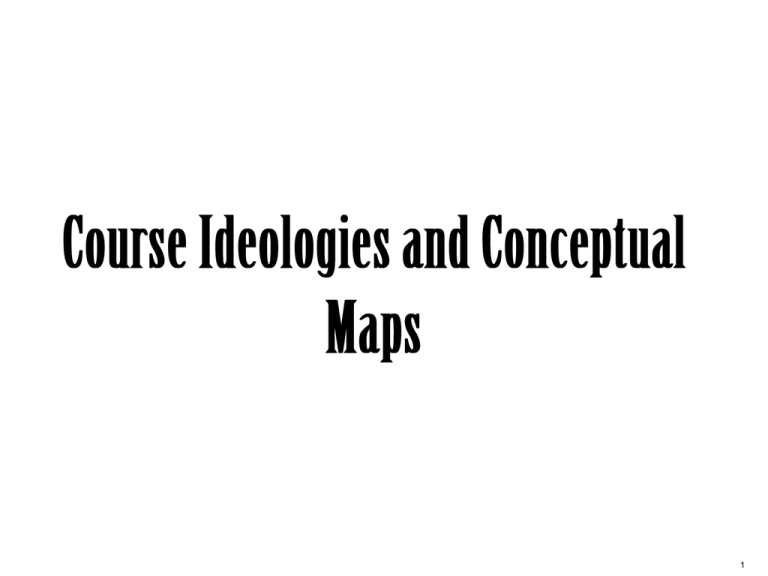
1
Culture, the Media and the
‘Ideological Effect’
(Stuart Hall, 1977)
2
PART 1
Historical Materialist Conception of
Society (Marx) and Culture (Hall)
• According to Marx, the type of collaboration that humans favor to
appropriate nature and produce material goods shapes a
society/culture’s ideologies, discourses, knowledge and institutions.
• In return, these ideologies, discourses, knowledge, and institutions
sustain this society/culture’s mode of production.
• In a capitalist system, this collaboration and mode of production
revolve around the exploitation of the working class by the ruling
class within specific historical conditions.
(Ref. Hall, 1977, pp. 315-319)
3
© Sources unknown. All rights reserved. This content is excluded from our Creative
Commons license. For more information, see http://ocw.mit.edu/help/faq-fair-use/.
4
PART 2
Displacing Function of Ideology
and False Consciousness
•
Social subjects can have a false consciousness of the conditions in
which they live because of the displacing function of dominant
ideologies.
•
In a capitalist system, social subjects make sense of their life situation
through the lens of the market ideology, which operates via discourses
about wages, contracts, bargains, consumers, democracy, etc. that:
•
•
•
•
make one kind of relation (exploitation) appear as the opposite kind of relation
(individualism, independence and equality) (Camera Obscura)
make one aspect of the relation (negotiation of wages) stand for the whole relation (equality
between managers and workers) (Fetichism)
mask the foundations of common ideas (Concealment)
Bringing to consciousness common ideas’ hidden premises, by
reasoning and arguing, is a revolutionary act in itself.
(Ref. Hall, 1977, pp. 321-327)
5
© Sources unknown. All rights reserved. This content is excluded from our Creative
Commons license. For more information, see http://ocw.mit.edu/help/faq-fair-use/.
6
PART 3
Ideological Role of Language
Dominant ideologies operate through language, which is a sociallyconstructed system of signs that:
• mediates our thinking process
• allows things to mean something
• refracts ‘reality’ and distorts it to varying degrees.
In the capitalist system, the exploitation of the working class by the
ruling class is refracted by language and appears as an equal
relationship legitimizing social inequalities.
(Ref. Hall, 1977, pp. 327-331)
7
© Sources unknown. All rights reserved. This content is excluded from our Creative
Commons license. For more information, see http://ocw.mit.edu/help/faq-fair-use/.
8
PART 4
Three Concepts of Domination
1) William: There is more than one ideology in a society. The dominance of some
ideologies is determined by who controls the “process of incorporation,” that is to say
the selection of ideas that are valued and the interpretation of dissident ideas as
deviances.
2) Gramsci: The ruling class cannot achieve dominance and hegemony only through
coercion (police, laws, army). Rulers also have to win the consent of subordinate
classes through ideologies and achieve a complex alliance of class fractions.
Hegemony is not given and permanent: it can be lost and has to be constantly
secured with the preservation of an unstable equilibrium. The ruling class has
to make concessions to win consent and legitimacy.
Dissident ideas are easily contained when opposing groups are not organized and
strong enough to act as a counter-hegemonic forces and intervene in the
process of incorporation.
3) Althusser: Unlike coercive states, the ideological state apparatuses rule by
reproducing the ideology of the ruling class, which is not simple and unified, but a
complex set of contradictory ideas that reflect class struggles.
(Ref. Hall, 1977, pp. 331-336)
9
© Sources unknown. All rights reserved. This content is excluded from our Creative
Commons license. For more information, see http://ocw.mit.edu/help/faq-fair-use/.
10
11
PART 5
Capitalist Societies Ideologies and Their Mechanism
The ruling class does not exert control over society directly, but
through the civil society’s market ideology, as well as through the
state’s ideologies of justice, democracy, and freedom, which all
operate through three mechanisms:
• fragmenting
• uniting
• masking
These ideologies legitimate the hegemony of the ruling class and
create the illusion of a consensus.
(Ref. Hall, 1977, pp. 336-341)
12
© Sources unknown. All rights reserved. This content is excluded from our Creative
Commons license. For more information, see http://ocw.mit.edu/help/faq-fair-use/.
13
PART 6
Ideological Role of Mass Media
•
In the context of monopoly capitalism, mass media become the main producers and
distributers of culture, as well as the most influential ideological apparatus.
•
The state and the ruling class do not control the media directly, but rather through dominant
ideologies. This allows media to gain legitimacy.
•
The broadcasting principles of objectivity and neutrality encourage encoders to present
different ideas, opinions, practices, and lifestyles.
•
However, encoders internalize dominant ideologies and unconsciously select, rank, and
interpret these different ideas as either as permitted and meaningful or as deviant and
meaningless.
•
Encoders also present these different ideas, opinions, practices and lifestyles as part of a
coherent society that makes room for minorities and in which different opinions can be
debated. This produces the illusion of a consensus that has been reached rationally.
•
Decoders are free to negotiate the meanings of mass media messages and interpret them in
counter-hegemonic ways, but they are strongly encouraged, by visual and verbal
techniques, to interpret mass media messages within the limits of dominant ideologies.
•
Moreover, the possibility of negotiating meanings legitimizes mass media by producing the
illusion of a consensus that has been reached rationally.
(Ref. Hall, 1977, pp. 342-346)
14
15
Hall, Stuart. 1979. “Culture, the Media and the ‘Ideological
Effect’”. Chap in. J. Curran, M. Gurevitch, and
J.Woollacott (eds) Mass Communication and Society,
pp. 315-348. Beverly Hills: Sage Publications.
16
Note: The sources for the background
images in slides 4, 6, 8, 10, and 13 are
unknown. This content is excluded from
our Creative Commons license. For more
information, see
http://ocw.mit.edu/help/faq-fair-use/.
17
MIT OpenCourseWare
http://ocw.mit.edu
CMS.701 / CMS.901 Current Debates in Media
Spring 2015
For information about citing these materials or our Terms of Use, visit: http://ocw.mit.edu/terms.

